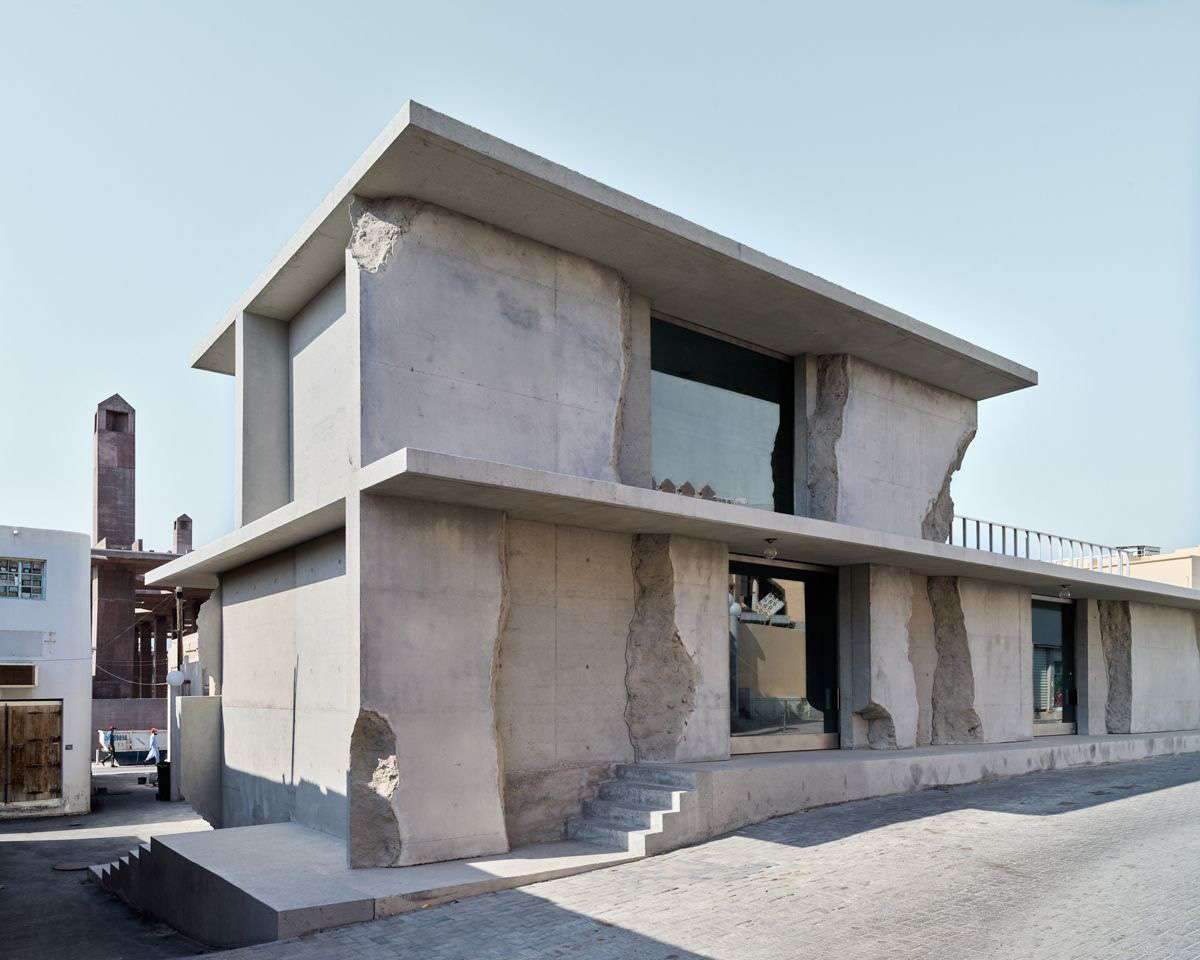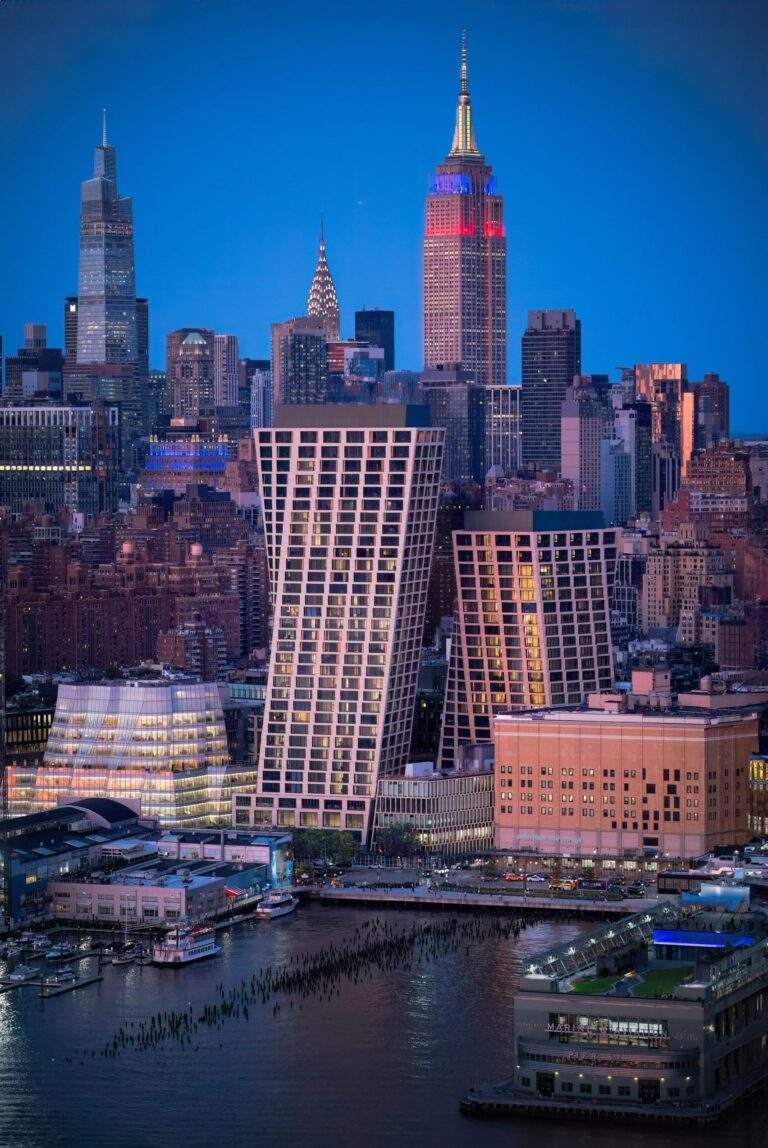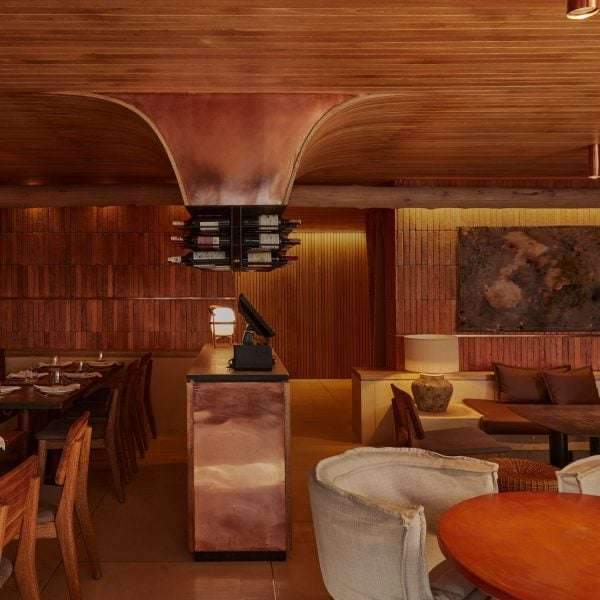Redesign of Muharraq Souq Bahrain by Anne Holtrop,
Studio Anne Holtrop redesigned Bahrain’s oldest souk, Souk Muharraq, using irregular concrete blocks.
The project was called Al-Qaysariyya Market, and it was developed as part of major renovation projects for the Pearling Path Project.
This project sees 7 new developments designed by world-renowned architects,
including Christian Kerez multi-storey car park.
and Valerio Olgiati’s monolithic, earth-coloured entrance,
the Museum of the Fisherman’s Pearl in Anne Holtrop’s studio, and Gionata Rizzi’s studio, in southern Muharraq.
The rehabilitation was carried out in collaboration with Studio ing Franco Peanon and Associates,
Marco Mutesi and Samira Kazempur.

Features of the new design
Resembling a large geological block,
the building consists of irregular concrete blocks that refer to the distinctive shapes of traditional coral stone building materials for both parts of the area:
Souk al-Qaysariyya and the Fakhroo buildings.
The historic city of Muharraq is the third largest city in Bahrain and has undergone a major transformation since 2002,
with its public spaces focusing on the city’s pearling economy and its rich history and heritage.
The new Qaisaria market in Muharraq is located next to the Green Corner building,
which was designed by the same studio and completed in 2020.
Both Souk al-Qaysariyya and Amara Fakhro played an important role in the pearling economy,
as they hosted the cafés where some pearling deals took place.
As well as the place where the timber will be received and stored for the construction of pearling fleets.
Studio Anne Holtrop aims to integrate the old and the new into a new market by proposing an “add-on and subtraction” method.
New stores on the market are made of cast concrete elements with an unrestricted sandy border,
as in the Green Corner Building, and each molding technique is transformed into a unique element.
The buildings were in ruins, roofless and partially demolished,
and the studio reconstructed the walls and roof in simplified cast-on-site concrete.
Concrete was used to accurately trace and fill in the missing sections of the walls.
In both designs, an amorphous border emphasizes the shapes of coral stone slabs that can be found in ancient structures.
Derived from its physical choice, the building’s homogeneous language is dedicated to retail spaces,
while the character of the structure has been preserved with existing traditional stores.

Exhibition in Muharraq: “Pearl’s Path”
The Pearling Path project will also be displayed at the Bahrain Pavilion at this year’s Venice Architecture Biennale.
The exhibition, organized by Noura Al-Sayeh and Ghassan Al-Shamali, entitled “The Pearling Path” in Muharraq, presents various models, objects, meeting minutes, handicrafts, drawings and talks.
It also highlights the unique heritage of Bahrain’s Pearl Age through the architecture and urban heritage of the old city as well as three oyster beds.







